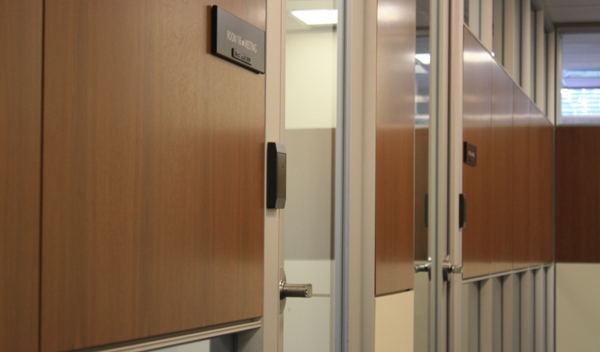Access control systems can eliminate security risks associated with traditional key and lock systems. With access control systems, you can regulate exactly who can enter your facility, at what time they can enter, and through which point they can enter. Also, you save money by not having to replace keys and locks when a key is lost or stolen.
But did you know that your access control system is loaded with extra features that could make your life easier? Many of our customers underutilize their security system. With some initial setup, you could improve the security of your building, simplify your life, and save yourself some time.
Here are 9 things your Access Control System can do (that you may not have previously known):
1) Temporarily Unlock a Door
The access control system allows each card reader controlled door to be temporarily unlocked during certain time periods, which allows the door to be opened without an access card. For example, if you have a contractor in your building that needs regular access to a door, you can schedule the door to be unlocked for a certain time on a specific day.
2) Custom Access Levels
You can create several custom access levels for your staff and guests. For example, you can set Level 1 for guests and that would only open washroom doors. Level 2 could be for your staff, which would give access to washrooms and meeting rooms. Level 3 could be for your IT and Security staff, which would give access to washrooms, meeting rooms, server rooms, and the candy room.
Besides which doors to open, the access levels can be customized for a time of day, day of the week, and holidays. When you have new staff, you can easily assign them to one of the pre-determined access levels.
3) Set Up Start and Expiry Dates
With each access card or fob, you can set it to start and stop working on specific dates. For example, if you have an out-of-town guest visiting for a week, you can give him a visitor access pass that is only valid for that week. Or if you have a staff member resigning, you can set their pass to expire on their last day of work.
4) Automatically Lock and Unlock Doors
You can set up a schedule for specific doors to lock and unlock automatically. This is often done for buildings that are open to the public during the day but closed at night. Automatic locking and unlocking eliminates the need for a person to perform this function manually.
You can also integrate this with the “First person in” feature which allows for doors to be unlocked only after someone has entered the building. This is useful when there is a snow day and you don’t want to the doors to automatically unlock.
5) Custom Reports
You can run a myriad of custom reports through your access control system. Each custom report can be automatically emailed to relevant parties on a daily, weekly, or monthly basis. Here are a few examples:
– View the history of who opened a specific door at what time
– Manage and track visitors within your facilities
– View all instances of doors being opened for too long or doors being forced open
– Inactive / Unused Cards
You can set the reports to be based on a set of parameters such as:
– Specific types of transactions
– Specific ranges of time
– Specific ranges of dates
– Specific doors
– Specific access cards
6) Lock Down Mode
Lock down mode disables all users from accessing one, a few, or all entrances, with the exception of a master card. This application is designed to restrict employee access until a manager arrives on the scene. The door will not open until a valid master card is used, or until the lock down mode is lifted. (Note: Not all Access Control Systems have this feature.)
7) Set Up Photo Notifications
You can set up notifications on your computer that show employee photos as they pass through protected doors. (Note: Not all Access Control Systems have this feature.)
8) Custom Alarm Notifications
You can set alarm notifications to make different sounds, which makes it easier for you to differentiate between urgent and non-urgent situations. A common alarm notification is for “Door Held Open”, which is usually not a reason to worry. But the alarm notification for “Door Forced Open” is more serious, and your computer could play a different sound (rather than the standard Windows tone).
Also, you can set up your system to email you or someone else if certain alarm notifications go off. That way you will still be notified in case you are away from your desk and miss the sound notification. If you want immediate notification by phone, you can set up a specific door to be monitored. (Note: Not all Access Control Systems have this feature.)
9) Live Video when Alarm Goes Off
Call up live video in the event of an alarm. This option is only available if your access control system is integrated to your video surveillance system.
These are 9 features that your access control system has that will save you time and make your building more secure. Depending on which access control system you have, and which version of software, not all of these options may be available to you (typically, options #1-5 are standard in all systems, and options #6-9 are available for certain systems.) If you have questions about your access control system, send us an email or give us a call at 604-540-7673.

